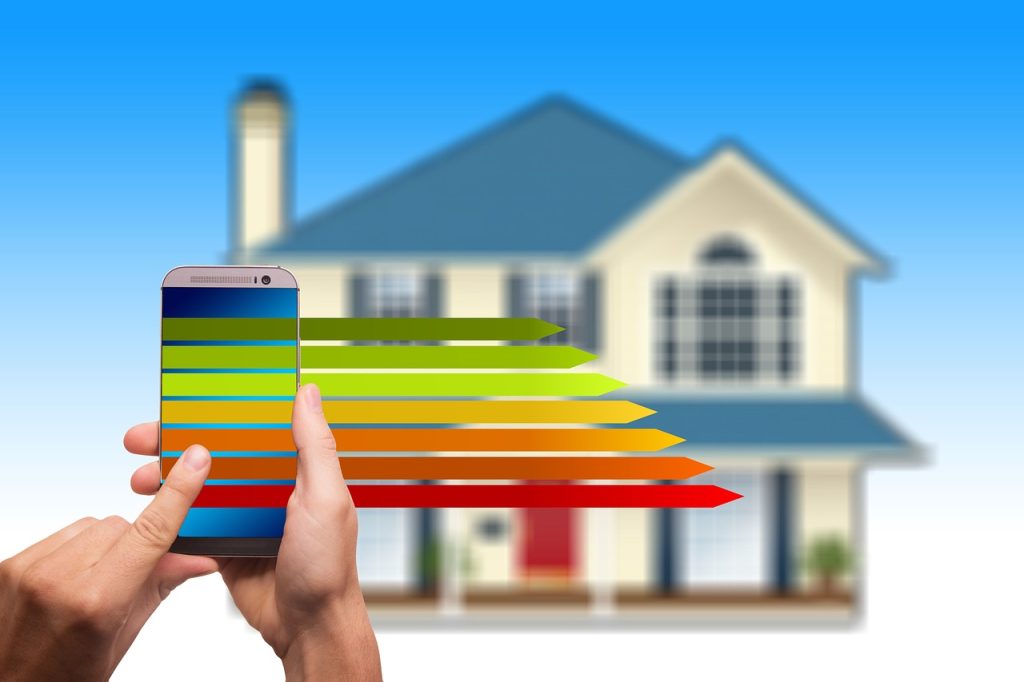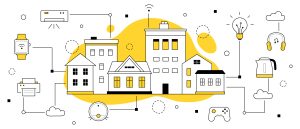
A Simple Guide on the Internet of Things
The Internet of Things is regarded as the interconnected network of objects, including machines, infrastructure, and various instruments. This equipment’s are built with connectivity and sensors that offer them the opportunity to interact and share info with one another over the net. With the help of internet of things technology, various devices can gather and send real-time info, giving users more control and managing routine chores. For instance, voice assistants and smartphone apps can be used to remotely control certain home appliances including security cameras. Let’s dive deeper into the topic.
How the Internet of Things Work
Basically, there are three main elements that constitute the IoT: devices or equipment, connectivity, and information processing.
- Devices: IoT devices have detectors built in and are linked to the internet. These gadgets can range from general items like smart freezers to commercial machinery and medical gear.
- Connectivity: This equipment’s are linked to the net and to one another via a variety of connections, including Bluetooth, cellular networks, and Wi-Fi. They can now interact with various other equipments and barter information thanks to this.
- Data processing: A variety of technologies, including machine learning and cloud computing, are used to process and breakdown the details gathered by IoT devices. Decision-making can be automated, and conclusions can be drawn using this data.

IoT devices operate by gathering details from sensors and sending it to a processing hub for review. Then, this information can be used to initiate processes or offer perceptions for making choices. Let’s say you have an internet-connected smart refrigerator. You can instantly add items to your grocery list when you run out of food thanks to sensors built into this refrigerator. Additionally, the refrigerator has a built-in video that records images of its contents each time the door is closed.
Your smartphone receives the image from the camera, which an app then processes to reveal the products that are low on stock or have expired. Your phone receives a notification from the program listing the groceries you still need to buy. After that, you can add these products to your virtual shopping cart and have them delivered right to your door.
Future Trend and Predictions for the Internet of Things
In years to come, it is anticipated that the IoT, a rapidly developing technology, will grow and spread even more. The following are some trends and predictions for the IoT in the future:
- Increased adoption in industrial applications: Although the IoT is already used in sectors like transportation as well as manufacturing, it is predicted that these sectors will embrace it even more in the future. IoT technology can increase safety, lower costs, and improve working efficiency in industrial environments.
- Integration with 5G Networks: The deployment of 5G networks is anticipated to make it possible for IoT tools to interact more quickly and reliably. This will make it possible to use real-time data processing and analysis more often and to create new IoT services and apps.
- Extension of Edge Computing: Edge computing, a decentralized architecture for computing, brings processing capacity closer to the data source. This makes it possible to analyze data more quickly and eliminates the need to send data to centralized servers for analysis. Edge computing is anticipated to play a bigger role as the number of IoT devices increases in order to handle the massive amount of data being produced.
- Advancements in AI: AI can be used to evaluate the enormous amounts of data produced by IoT devices and offer a closer view for decision-making. It is anticipated that as AI technology develops, it will play a bigger role in the IoT environment.
- Keeping Security in Check: With the rise of connected gadgets, there is an increased risk of security flaws and privacy issues. It is anticipated that creating safe and private Internet of Things set-up, using blockchain technology and other security measures will receive more attention.
- Increased Use in Healthcare: Use of IoT devices in healthcare will grow as they are already being used to take note of patient health as well as provide better treatment. IoT technology is anticipated to be even more integrated into medical systems in the future, with the potential to enhance patient outcomes and lower expenses.
These are just a few instances of the IoT’s predicted future trends. We can anticipate seeing even more fascinating developments and innovations as technology continues to develop and is more fully incorporated into our everyday lives.
Conclusion
In conclusion, the majority of people misjudge how quickly the Internet of Things will materialize. A few companies and manufacturers have already begun using smaller versions of the majority of the required technological advancements. One of the main reasons it hasn’t been completely implemented is the effect it will have on all sectors across the globe.
